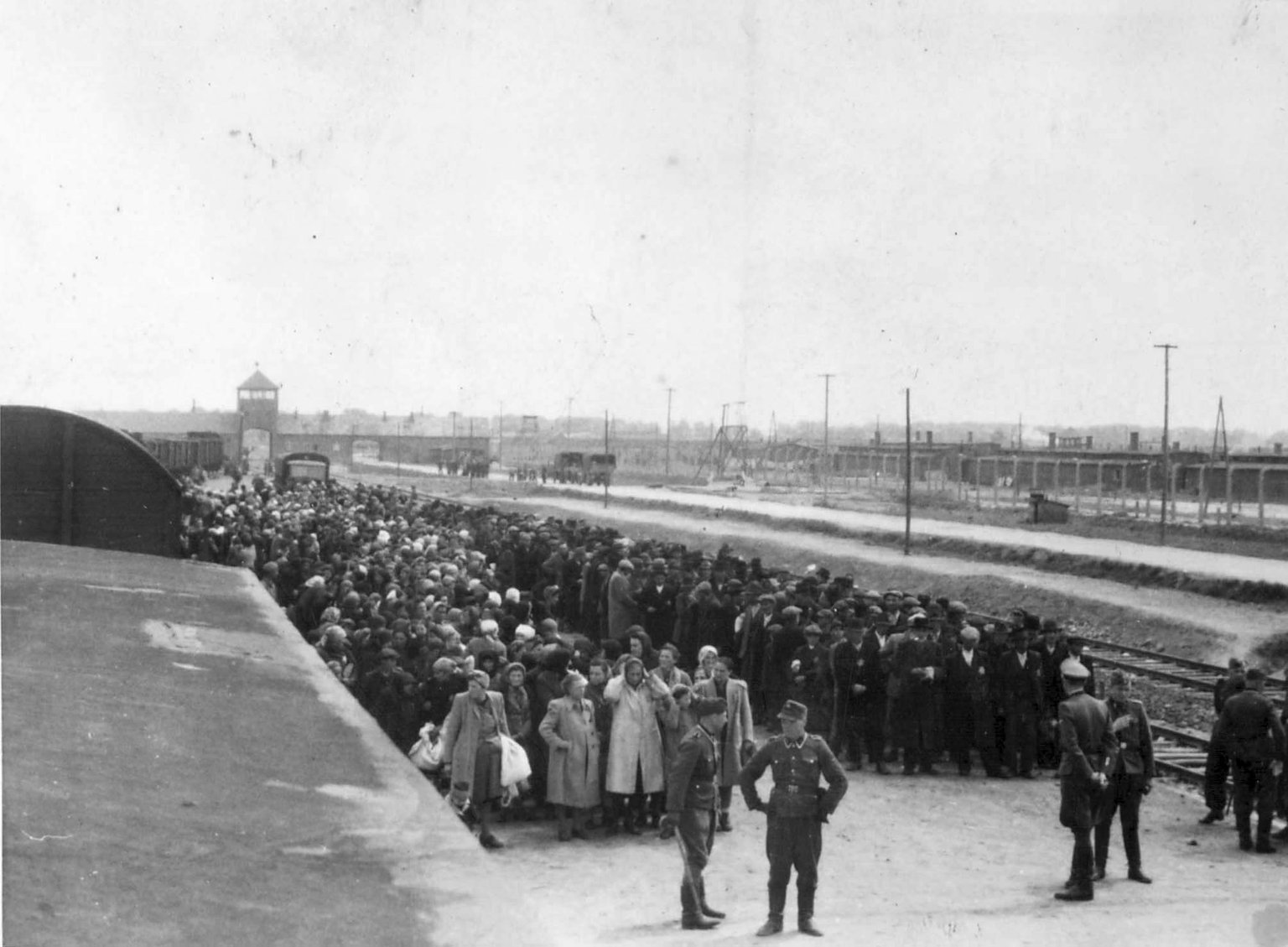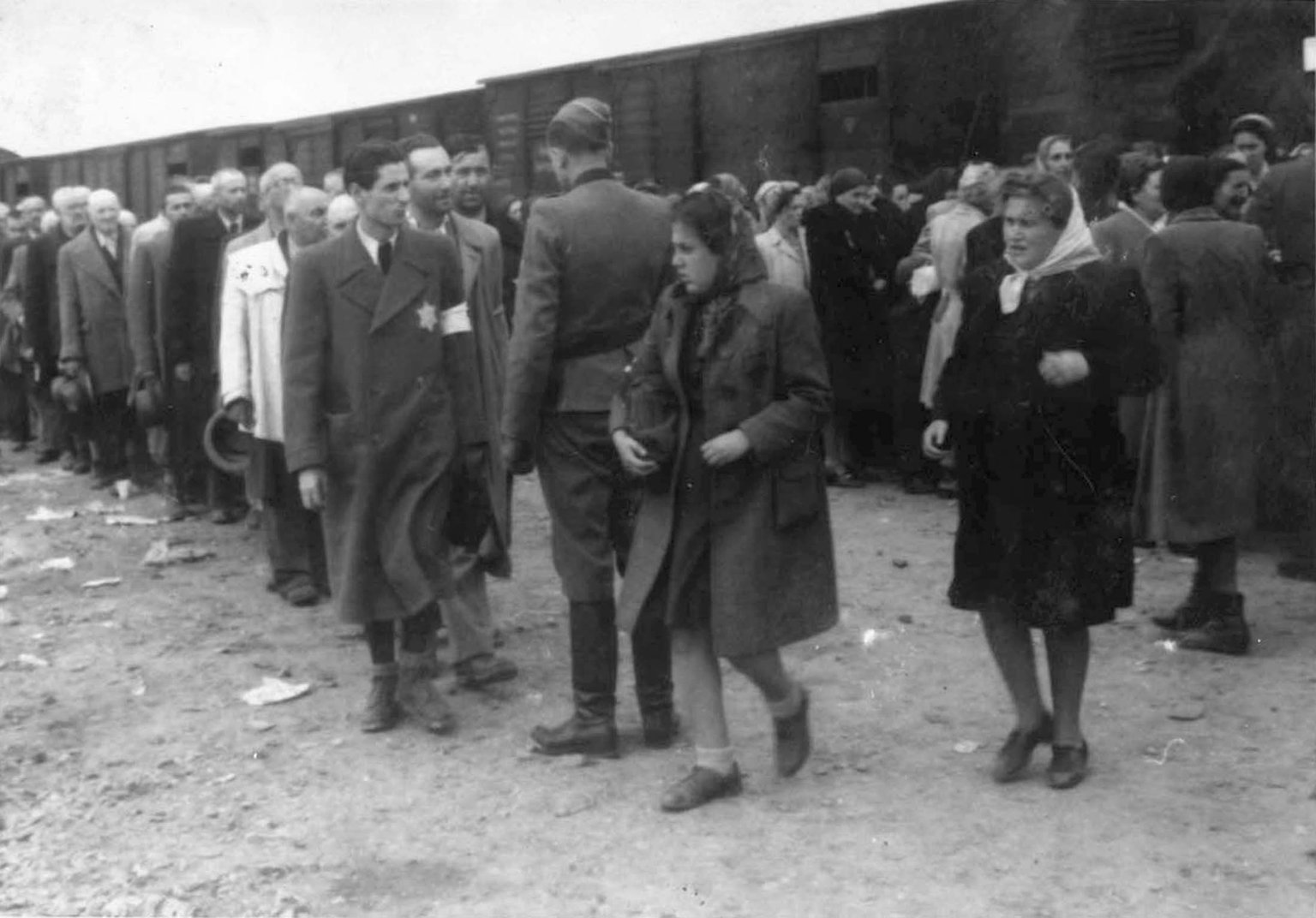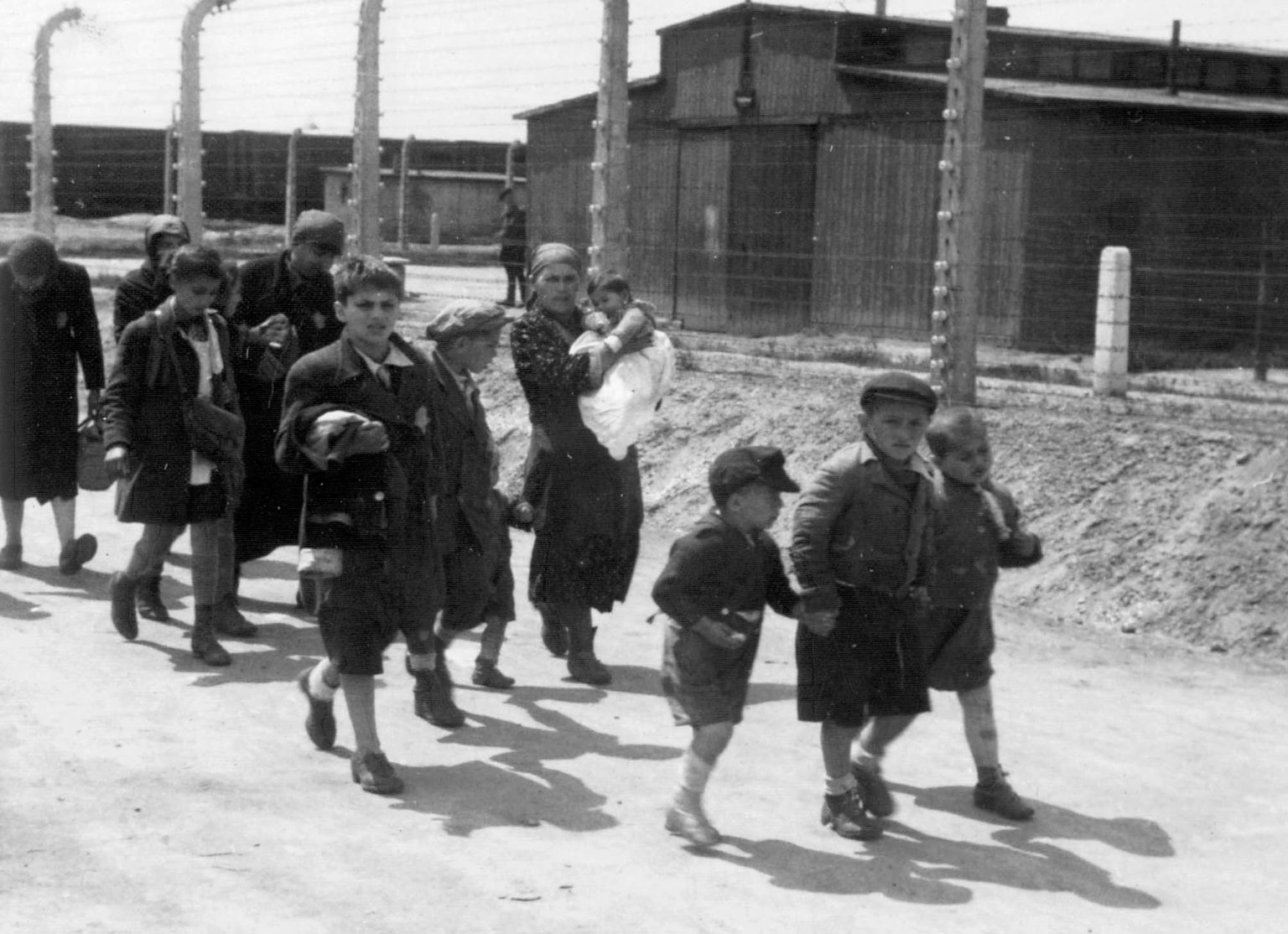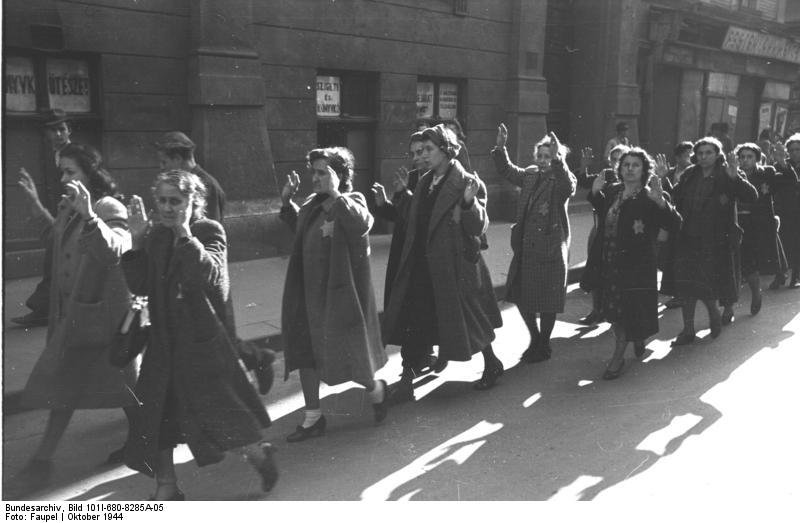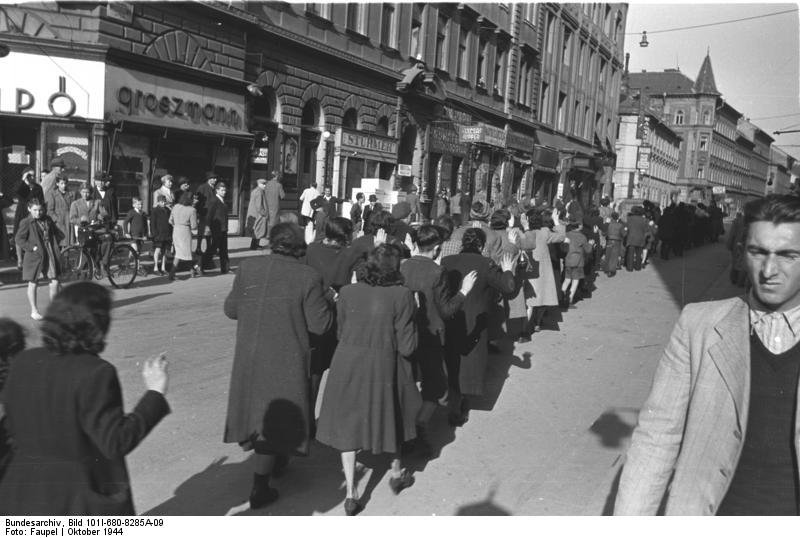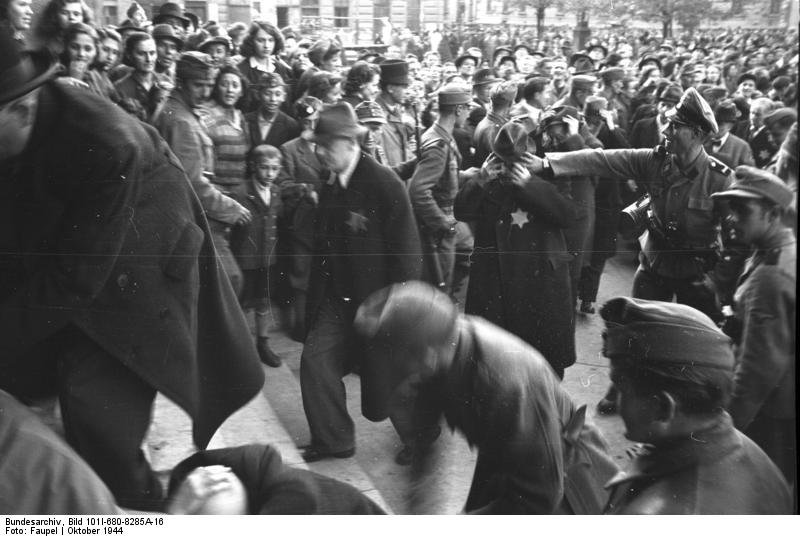Of the 1500 transports arriving at Auschwitz, only one has been photographed: the train that entered Auschwitz-Birkenau on 26 May 1944. It carried Jews that came from the north of Hungary. Two SS men took pictures of the people getting off the train. The photos show that they had to line up in front of SS officers. The men and women who have been selected for forced labour are handed camp clothes before entering the camp. Another group of people is waiting near the gas chambers.
The train brought in 3500 of the 437,000 Hungarian Jews deported to Auschwitz between 15 May and 8 July 1944. Almost all of them were murdered.
In March 1944, Nazi Germany occupied Hungary. Until then, Hungary had been an ally of Germany, but the Hungarian government no longer believed in a German victory and wanted to make peace with the Allies. Germany responded by taking over and installing a government that was willing to cooperate with the Nazis.
The Nazis took the opportunity to kill the more than 700,000 Jews living in Hungary. SS officer Adolf Eichmann came to the country to organise the transports. Auschwitz-Birkenau was being equipped to cope with the large number of new prisoners. The new train track that led into the camp is shown in the pictures.
In Hungary, as in other countries, ghettos were built where the Jews were made to stay until their deportation. As in the other occupied countries, they had to wear the yellow Star of David on their clothes. The Hungarian police assisted in their arrest and deportation. The Jews from Budapest, the capital, were the last in line. They were made to live in large apartment buildings that were marked with yellow stars.
The transport of 15 May 1944 was the first of 151 transports that took thousands of Jews a day to Auschwitz-Birkenau. On the 8th of July, the transports were discontinued by Miklós Horthy, Hungary’s head of state. The Allies and the Pope had pressured him to do so after they had received reports about the fate of the Jews in Auschwitz.
In October 1944, an antisemitic party came to power and resumed the persecution of the Jews. 80.000 Jews were shot in Budapest, and thousands more were killed in other actions. 568,000 Hungarian Jews died between 1940 and 1945.
